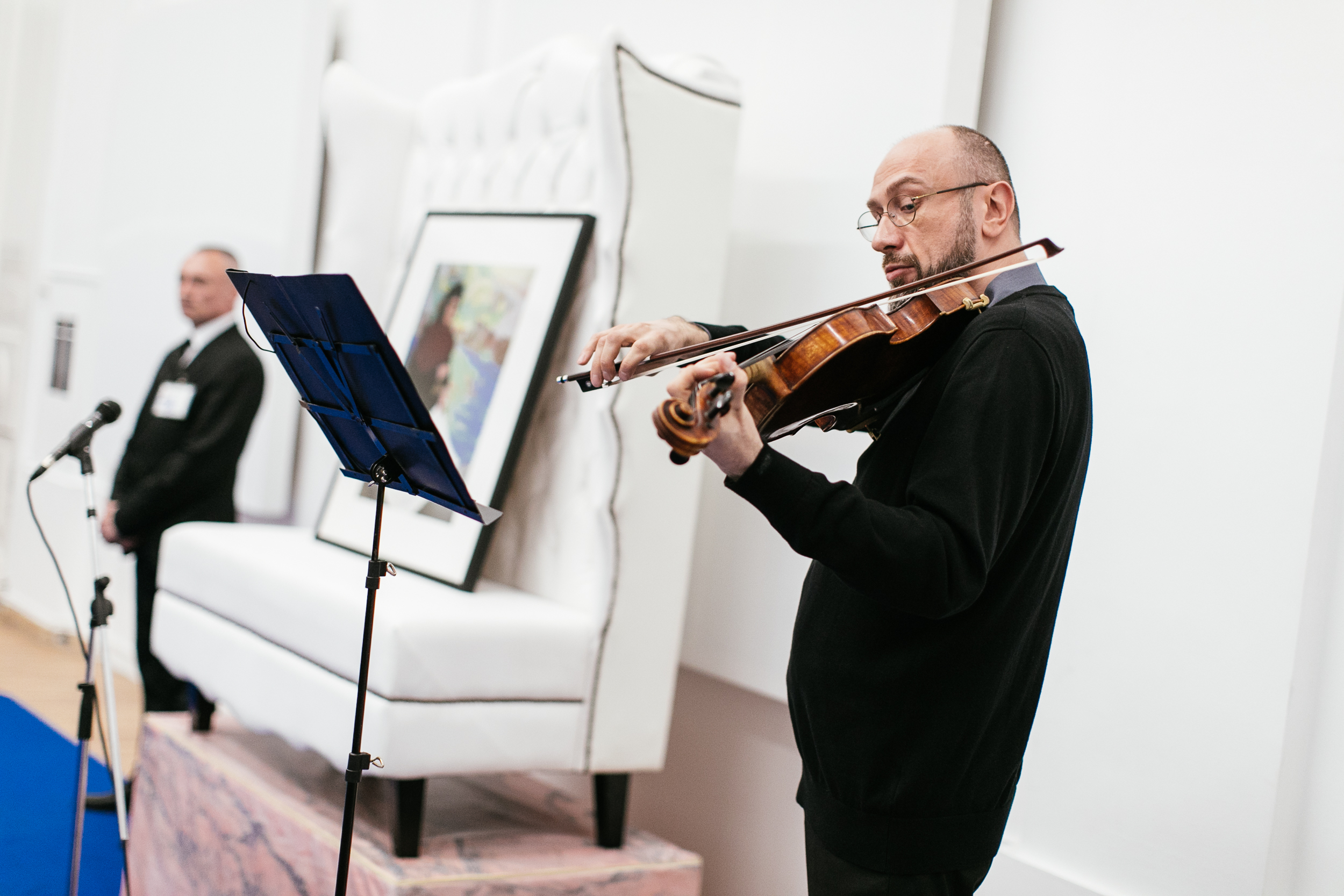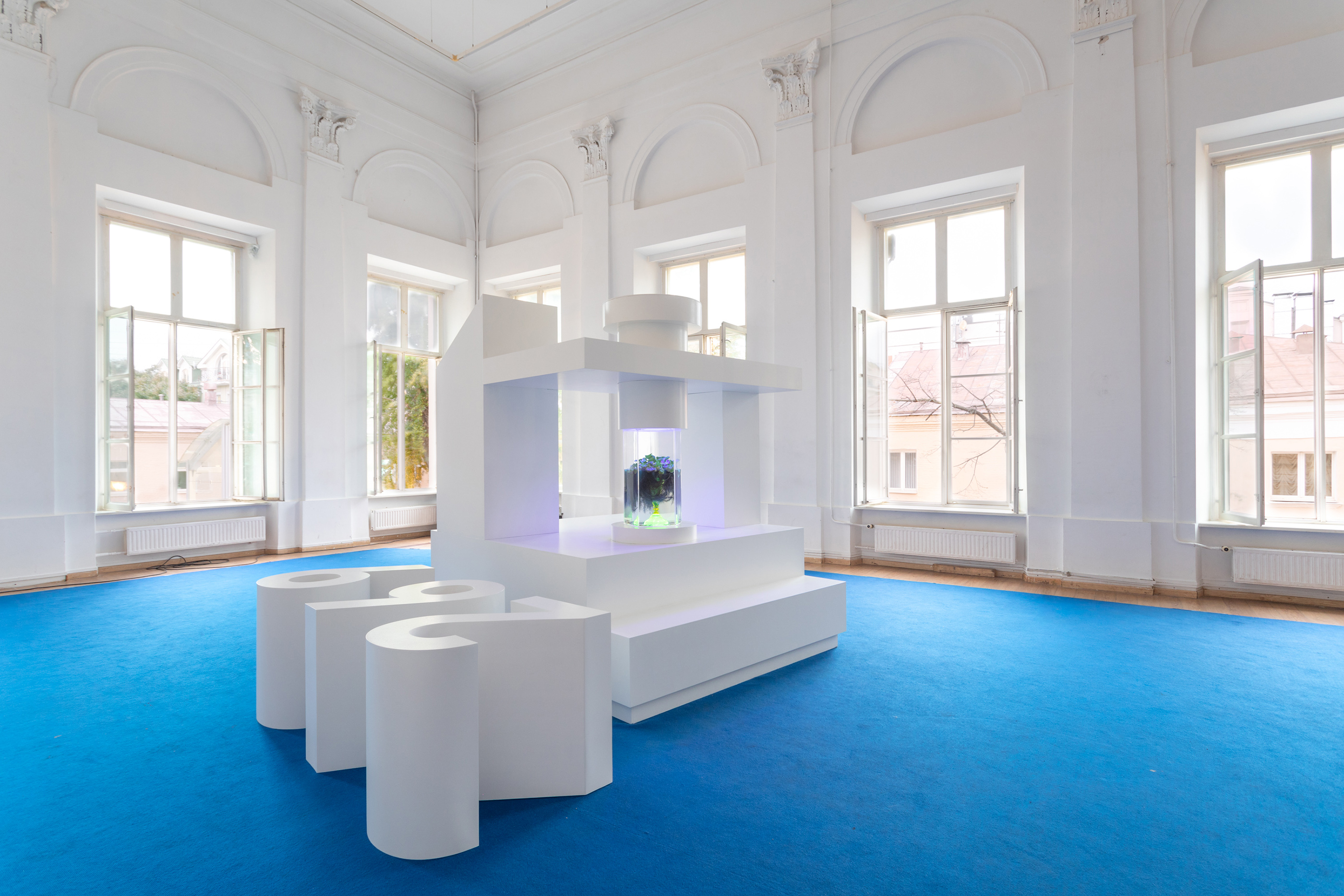Performances
The public programme of the General Rehearsal project presents performances in which Russian and foreign artists explore the topic of combining different artistic practices.

The project is inaugurated with the Warm Up show by the British artist Cally Spooner. It is an experiment with the spectators’ expectations, a presentation of art to viewers, a visual metaphor of the future which one can never be prepared for.
The main character of the performance Quattrocento Shirtly by the Russian artist Shifra Kazhdan from the associative Theatre of Mutual Actions is not an author but a work: the photo of Vladislav Mamyshev-Monroe titled Akhmatova Remembered, made by Sergey Borisov in 2001. Visitors can ask the photo thei questions or just talk to it. The author of the performance, Shifra Kazhdan, promises that the Monroe’s photo will talk in a free and relaxed way about itself, about the topics covered by its author and the method used and, perhaps, about the secret of its creation, for modern art is always self-reflective.
The performances of the Romanian choreographer and dancer Alexandra Pirici are termed sculptural interventions: she animates the images of famous monuments and stages subjects from classical paintings. Her work Parthenon Marbles speaks of the repatriation of cultural values. The performers, together with the author, act out a situation in which the Elgin marbles and statues of the Athenian Parthenon stored in the British Museum return to their homeland. This story is not so much about cultural imperialism, but rather about counter-intuitive outcomes and the extent to which a request for the repatriation of cultural property can have an artistic dimension.
The three-part RR (Referrential Realism) performance by the media poet Natalia Fedorova explores the relationship between words, art objects and bodies. It is based on a text generator that uses works of art instead of words. The syntax of the generator is borrowed from Armen Avanessian’s philosophical play Metaphysics from the Future, presented in the second act of General Rehearsal. The performance suggests considering the exhibition as a space of a linguistic utopia in which everything is pronounced through works of art.
A constant presence at the Sonar and Mutek festivals, Myriam Bleau brings to Moscow her Soft Revolvers performance, which in 2015 was awarded a Special Jury Prize at Ars Electronica. Soft Revolvers is a music and light piece, performed on instruments designed by Bleau herself. It is a new and unique way of presenting electronic music: four plastic spinners, thanks to speed sensors, Wi-Fi signals and the artist's fingers, turn into a techno-sculpture that unfolds in time and shows listeners the beginnings of sound .
Mikhail Maksimov in his work Disposition for a Large Laser Beam uses a laser beam, which chisels out a copy of one of the artworks from General Rehearsal with the aid of an algorithm based on philosophical texts by Empedocles and Gershom Scholem. Whereas in the avant-garde, the process of emancipation of the object (the machine) involved likening it to a human being, in this case the object is initially free: it neither needs nor refers to a human being, even though the philosophical text is the starting point of its functioning.

A lecture-performance by Ali Cherri Water Blues accompanies a screening of his film, The Digger, about Sultan Zeib Khan, who guarded the ruins of an ancient necropolis in the desert of Sharjah for 20 years, day after day. The Lebanese-French artist filled his performance with images of floods, quicksand and marshes.
The Double, a work by Alexandra Sukhareva, is a show about the connections built around the phenomena of radioactive radiation. It is an artificially designed ecosystem in which the water hyacinth flower sees it reflection in a radioactive uranium vase, with man invited as a guest. The lyrical music of Arthur Mein is intended to be a counterpoint to the unusual meeting of two objects, in which the main nexus is the ability to radiate and absorb, attract and repel.
General Rehearsal concludes with the world premiere of Sergei Tcherepnin's performance Sweeping the Kokako Spell, consisting of music, choreography and figurative theatre, together creating a theatralized action. Masterfully interacting with electroacoustic objects, Tcherepnin transforms sculptures into sound-reproducing devices and endows his characters with a fluid, plastic identity. A complex system of special speakers designed by the artist, together with metal sculptures and sound converters, as well as the movements of actors and the voices of birds create the project for the genetic salvation of the New Zealand Kokako bird, which is currently on the verge of extinction.
Find out more about the General Rehearsal public programme

About the participants
Cally Spooner is a British artist. Her works were exhibited at New York’s New Museum, the Stedelijk Museum in Amsterdam, the Serpentine and Whitechapel Galleries, and the Tate Modern in London.
Shifra Kazhdan is a Russian artist member of the Theatre of Mutual Actions association. Her work has been shown at the exhibitions at the Sandretto Re Rebaudengo collection in Turin, at the Futura Centre for Contemporary Art, Prague, at the Hamburg Museum of Arts and Crafts and at the Moscow Museum of Modern Art.
Alexandra Pirici is a Romanian artist, choreographer and dancer. She explores the historical context of cultural phenomena and their influence on public life. Pirici has performed in Athens for the Future Climates platform, at Manifesta 10 in the Pompidou Centre, at the Van Abbemuseum and at other art institutes.
Natalya Fedorova is a media poet, media art language scholar, and the co-founder of the media poetry group Machine Libertine. She is the curator of the 101 Media Poetry Festival and a teacher at the faculty of free arts and sciences at St. Petersburg State University.
Myriam Bleau is a Canadian artist, composer, sound engineer and performer. She combines performance art, music composition and production of her own digital and analogue instruments, and works with music archives, light installations, digital and analogue visual images and various objects that become both her protagonists and co-authors.
Mikhail Maximov is a Moscow artist. His interests include the phenomenon of gravity, rail transport, and criminal forensics. He is involved in digital ballistics, material structure design and waste modelling.
Ali Cherri is a visual artist. He uses various media — video, installations, photography, found objects, archive material. He was born in Beirut in 1976 at the beginning of the 15-year civil war in Lebanon. Combining documentary and fiction, the collective and the personal, psychologism and physicality, Cherri addresses the consequences of war and also explores the society of the restless present, for which the future represents not a promise, but a threat.
Alexandra Sukhareva is a Russian artist. Her works has been shown at Documenta 13 and Manifesta 10. In her works, she re-describes various events in terms of their impact on the modern picture of the world and builds a substantive conversation about the present and the future, as well as about how certain models of perception are possible (or impossible) now, and what mistakes were made in the process of the formation of key discourses.
Sergei Tcherepnin is a Russian-American artist. He participated in projects at the Georgian Pavilion at the 55th Venice Biennale, at MoMA and the Guggenheim Museum (New York), at the 30th São Paulo Biennale and the Whitney Biennale..